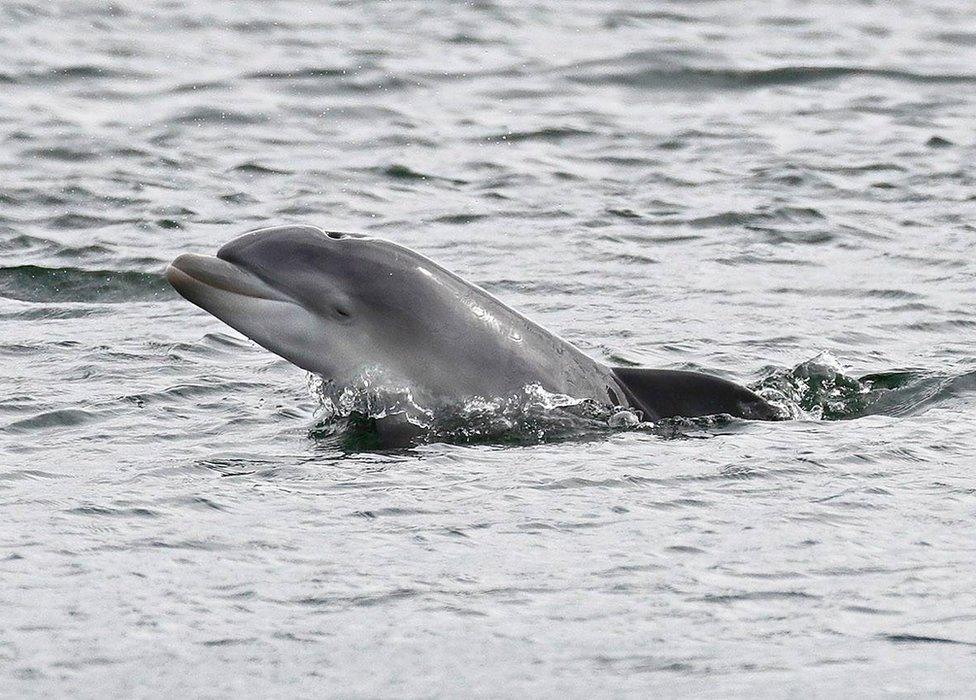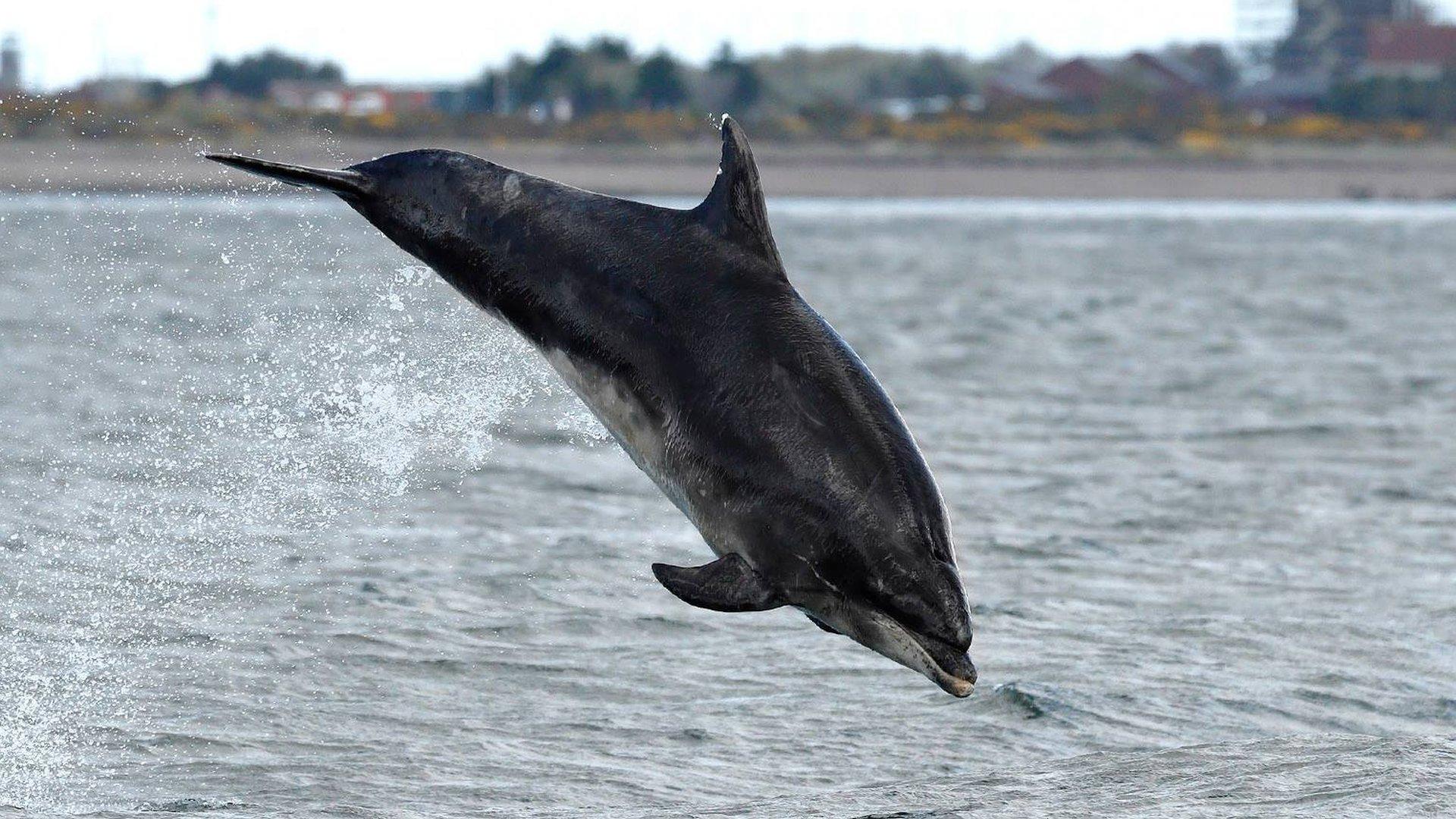Meet the dolphin 'Bad Boys Club' of Moray Firth
- Published

Animals in "The Bad Boys Club" are frequently seen breaching
The antics of a group of young male bottlenose dolphins in the Moray Firth have earned them the nickname the "The Bad Boys Club".
Their frequent breaching has made them well-known to dolphin watchers who regularly gather at Chanonry Point.
Whale and Dolphin Conservation field officer Charlie Phillips has been observing the firth's dolphins for more than 25 years.
He said: "The Bad Boys Club are some of the young, up and coming males."

The "club" is made up of a group of young male dolphins

The group is well-known to observers

A member of the Bad Boys Club displaying the behaviour that has made them a wildlife fan favourite
The Bad Boys Club includes dolphins known to scientists and wildlife watchers by the names Prism, Yin-Yang, Denoozydenzy, Bodhi, Flake and Charlie.
The Moray Firth and North Sea provide habitat for the world's most northerly resident population of bottlenose dolphins.
The species is protected by European Union rules.

A bottlenose dolphin known to scientists and wildlife enthusiasts as Kesslet

Dolphins Kesslet and Charlie
From Chanonry Point, where dolphins gather to hunt salmon, and other locations on the firth and also the Kessock Channel, Mr Phillips and others have also observed adult female dolphins and their young.
The animals include an adult called Zephyr and her calf.
Efforts are being made to confirm the identify of the mother of another calf.
Mr Phillips said the calf's mother could possibly be Honey, the offspring of a dolphin called Porridge and a sister to Spirtle, an animal recovering from severe sunburn caused while it was stranded on mudflats of the Cromarty Firth.

The young calf whose mother has still to be identified

Zephyr and, rising above the surface, her young calf
- Published22 July 2016

- Published6 May 2016
